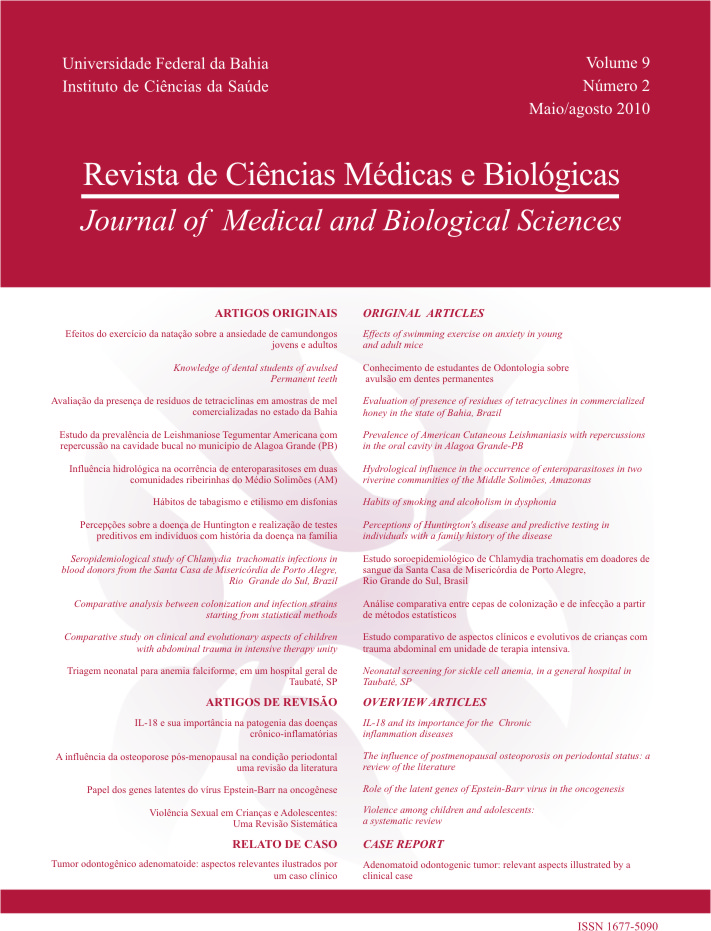Knowledge of dental students of avulsed permanent teeth
DOI:
https://doi.org/10.9771/cmbio.v9i2.4939Palabras clave:
Tooth avulsion - Attitudes, practice, tooth injuries – Dental students, Tooth reimplantation.Resumen
The survival of an avulsed permanent tooth depends on the management and the appropriate treatment of the injury by the dental surgeon. The aim of this study was to assess the knowledge of first-year and last-year dental undergraduates on guidelines for management and treatment of tooth avulsion. A 10-item multiple-choice questionnaire was distributed among 65 first-year and 60 last-year dental undergraduates at the School of Dentistry, Pontifícia Universidade Católica do Rio Grande do Sul (PUCRS), Brazil, between 2006 and 2007. Answers were graded 0 to 3. The results revealed a low level of knowledge among first-year and last-year students on the management and treatment of permanent avulsed teeth. Knowledge of last-year undergraduates of tooth avulsion was lower than what is required for a future dental surgeon. In conclusion, there is a need to improve the knowledge of dental students in the guidelines for the management of tooth avulsion. Because tooth avulsion is the most prevalent lesion in dentoalveolar traumas, it is of the utmost importance that dental surgeons be prepared to treat it properly, avoiding damage to neighboring teeth and structures, and esthetic, functional, psychosocial and therapeutic implications for the patient.Descargas
Los datos de descargas todavía no están disponibles.
Descargas
Publicado
2010-01-01
Cómo citar
Habekost, A. P. Z., Miotto, D. E., Gomes, F. V., Moraes, J. F. D. . de, Oliveira, M. G. de, Weber, J. B. B., & Marzola, C. (2010). Knowledge of dental students of avulsed permanent teeth. Revista De Ciências Médicas E Biológicas, 9(2), 97–101. https://doi.org/10.9771/cmbio.v9i2.4939
Número
Sección
Artigos originais
Licencia
A Revista de Ciências Médicas e Biológicas reserva-se todos os direitos autorais dos trabalhos publicados, inclusive de tradução, permitindo, entretanto, a sua posterior reprodução como transcrição, com a devida citação de fonte. O periódico tem acesso livre e gratuito.






